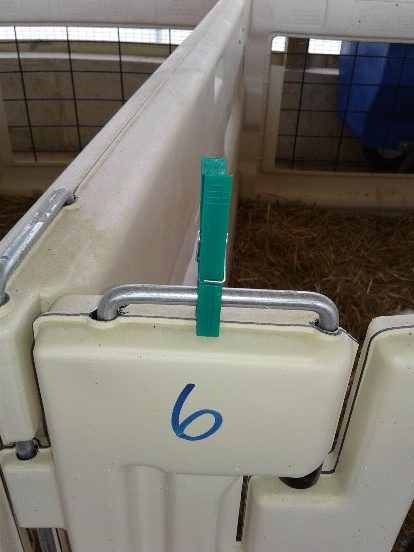By Grace Kline
While standards and methods for caring for dairy cattle has evolved over the years, we are able to learn more about cattle now than we ever have. We have increased cow comfort capabilities and become a more efficient industry. Over the years, there have been varying opinions, each farm doing what works best for them. One thing that has remained true over the history of dairy farming, is that cows like consistency.

Consistency does not happen without communication.
Record keeping is a huge part of communication. Keeping accurate records allows other team members to see an animal’s history, as it can impact future decisions. This can be done with computer apps such as Dairy Comp 305, PC Dart, or even an excel spreadsheet. It can also be done with a simple notebook and pen.
One method of record keeping I have seen is a pre-printed “questionnaire.” This will make sure all the right questions are being asked, and you will have the same information for each calf. For example, you can record calvings this way. Marking the sex, calving ease, when colostrum was fed, how colostrum was fed, and a variety of other essential information that could be useful later.
Whether you have a calf care team of 5 people or one single calf manager, employees get sick, need time off, etc. It is almost impossible to have a single person care for your calves every single day. We will go through a few different communication methods that can be applied to both small and large teams.

One thing I have seen time and time again is a white board with a map or grid of the calf hutches. The grid would be made of several boxes/rectangles modeling the hutches, with the calf’s name or number written inside of it. Using different color markers, you can indicate if the calf is sick, what stage of weaning they are at, or even if they are still bucket/bottle training. I would not recommend leaving notes of vaccinations, treatments, symptoms, or missed feedings on a whiteboard as they are easily erased. This should be written in a notebook or into a computer system where it is not so easily removed. One tactic my family used required ankle bands, similar to the picture here. We used the plastic ones that would last longer than fabric ones, as the calves enjoyed playing with them on the hutch fence. We fed 3 times a day and used a step-down weaning program. The colors and instructions were as follows:
No band: feed 3x/day.
Green– skip noon feeding. Fed 2x/day for 2 weeks.
Yellow– skip morning and noon feeding. Fed 1x/day for 1 week.
Orange– weaned, consuming grain, and awaiting weight measurements to move to group pen.

These can also be used to indicate calves that are sick or being treated, they are not just for use in weaning programs- the above is merely an example.
One item Cal-Tel provides are stickers for the indoor calf pens. The stickers can be used for the calf’s basic information, such as birthday, parentage, number, etc. Whatever works for you!
Similarly, a clothespin would work just as well for the group pens.
These can be used to identify calves that may drink slower than others, or that they are sick/being treated.
Wall signs with instructions are also very helpful to maintain consistency. These can contain milk mixing instructions, a bedding schedule, or even vaccinations. If wall signs are not of interest to you, having clip boards placed around the facility with checklists/reminders can be helpful to team members as well.
Our cell phones are useful communication tools, especially apps that allow you to leave notes/memos for multiple people. One of the apps that we use on our dairy is Slack. It is not specific to agriculture, but you can create different channels that allow conversations to be more specific, all in the same app.
For example, we have channels labeled treated cows, days off, and a general channel. Some of the app’s features require payment, but most of the use is free. Another very common one is Microsoft Teams, which also allows you to have different members and channels but requires a Microsoft payment plan.

While apps and computer programs can be helpful, nothing will beat in-person team meetings. Employees like to see managers taking an interest in their feelings and opinions, and a good manager will accept different points of view to find ways to improve. Within these meetings, you can also decipher what learning/communication styles your employees have, which will build a stronger team.
Consistency is key when it comes to caring for all ages of cattle, and it takes a team to do so. Proper training, record keeping, and willingness to communicate creates a strong calf care team. There are many routes to achieve excellent communication skills, and it is up to you and your team to find what works for you!
Grace Kline assists in the operation of Diamond Valley Dairy in Myerstown, Pennsylvania, with her husband and brothers-in- law. There, she cares for calves and heifers that are born both naturally and as a result of embryo transfer from deep-pedigreed show cattle. Grace has been caring for calves since her first job at 12 years old and has worked on four different farms, including an internship at Budjon Farms where she specialized in calves and show heifers.
